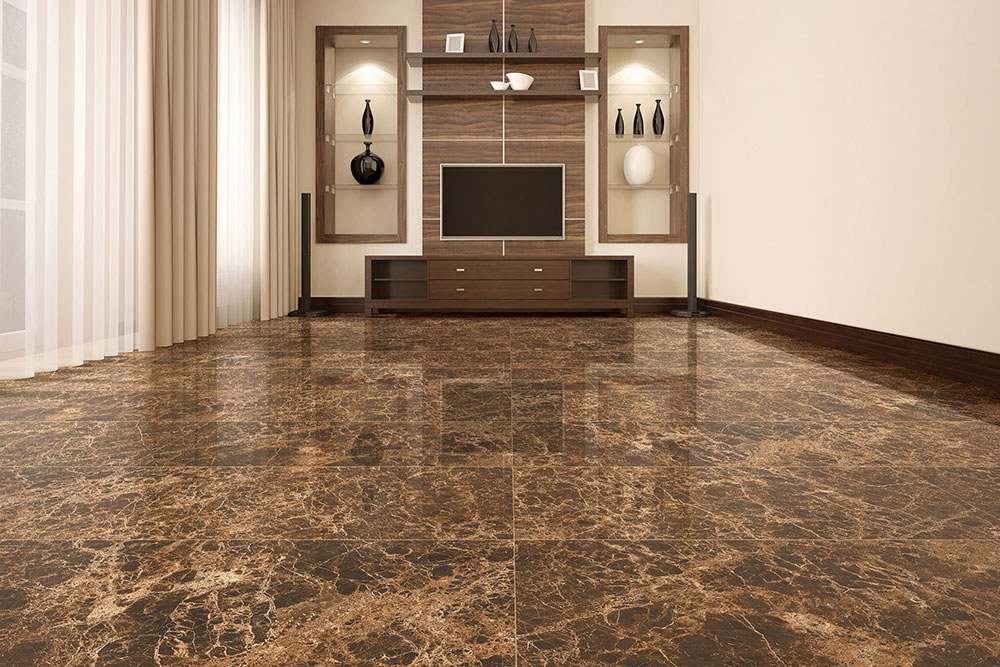Ceramic tiles are thin rectangular or square coverings that are made from hard-wearing materials. They are often made from ceramic, stone, metal, or baked clay. They are fixed together in a pattern and can cover a variety of surfaces, including floors, walls, and tabletops. There are several reasons to choose ceramic tiles for your home or office.
Decorative appeal
Decorative ceramic tiles are a great way to update any room. They are available in a variety of sizes and shapes and can be used on almost any bare surface. Some ceramic tiles mimic wood, leather, and suede, creating a realistic look. Others mimic metals and have pockmarks and oxidation patterns similar to real metals.
Designers are turning to ceramic tiles for more than just the bathroom. Kitchens and living rooms are increasingly being covered in them, thanks to their striking, lustrous surfaces. Many of these tiles are high-gloss, and their saturated colors make rooms appear bigger. They are also more durable than wallpaper and are easier to maintain.
Durability
Ceramic tiles are a good choice for flooring because they offer excellent durability. With proper care, they can last as long as 120 years. In fact, they can even outlast other surface finishes. The main reason for this is that ceramic is a natural material that becomes durable when fired at a high temperature. However, the firing process can result in some slight variations in the colour or actual size of the tile. Usually, ceramic tiles are grouped according to their shade and caliber.
Although ceramic tile is an excellent choice for high-traffic areas, it’s important to understand how these tiles wear and tear. Unglazed tiles may need a sealant or another coating to protect them from water and stains. Water can also get into the grout lines and weaken the installation process, allowing mold to grow.
There are two main types of ceramic tile: porcelain and non-porcelain. Porcelain is manufactured from clay and contains a combination of minerals. Ceramic tiles are made by firing clays under high temperatures and pressures. Compared to natural stone, they are far less delicate. However, porcelain is not the only type of tile available, and its composition is quite different.
Another important quality to consider is the abrasion resistance of ceramic tile. While it can withstand heavy foot traffic and is easy to clean, it also makes it difficult to stand on. Using an area rug or cushioned mat underneath ceramic tile is an excellent way to mitigate this issue. The durability of ceramic tile can also make it more difficult to drop items on them, making them not the best choice for areas where people will stand for extended periods of time. Another downside of ceramic tile is that it is very slippery when wet.
One of the main benefits of using ceramic tiles is their long lifespan. Unlike other flooring materials, they are highly resistant to water and can last for decades. This means that they are an excellent choice for bathrooms and kitchens. Not only are they water-resistant, but they are also fireproof.
Cost
The cost of ceramic tile flooring can vary considerably. Prices are typically based on the square footage. A one hundred square foot floor will require approximately eleven2 square feet of ceramic tile. A more complicated floor, or one with intricate patterns, will cost more. This is because the floor will require more cutting and angles.
Ceramic tiles are available in various shapes. Some are carved, others are smooth. There are also different colors and textures available. Some shapes lend themselves to particular patterns, while others are more difficult to install. Shapes do not impact the cost as much as other factors, but can increase labor costs. However, choosing the right shape can impact the look of your room.
A ceramic tile is easy to maintain. Its glaze is highly resistant to staining and is easy to clean. Regular sweeping and damp mopping will usually be sufficient. The tiles are also hypoallergenic and will not harbor dust mites or allergens. Aside from its durability, ceramic tiles are available in a wide range of colors and designs.
Porcelain tiles are also made from clay. They are more durable than ceramic tiles. They absorb less than 0.5 percent of water. Porcelain tiles are also available in larger sizes. Porcelain tiles are also less porous and will not crack easily. Porcelain tiles are more expensive than ceramic tiles. They are durable and can be installed in high-traffic areas.
A typical cost for ceramic tiles installation is approximately $10 per square foot. Handmade tiles can be hand-painted with decorative designs or images. Some tiles can even be 3D embossed. The hand-painted tiles are generally more expensive than regular ceramic tiles. These tiles can be used to create murals and can be installed on floors and walls.
Ceramic tiles come in a wide variety of colors, textures, and shades. They can create a natural or elegant look, or even a more trendy, sophisticated look. In addition to these options, there are ceramic tiles that are fire and water resistant.
Product segmentation
The demand for ceramic tiles is being driven by a number of factors, including the growing global population and the shift towards urbanization. According to estimates, the world’s population will reach 9.5 billion by 2050, with 66.4 percent of the population residing in urban areas. The changing lifestyles of urban residents are driving the demand for ceramic tiles, and favorable adjustments in living standards are needed to meet this growing demand. The region that is experiencing the greatest growth in this market is the Asia Pacific (APAC), where the number of urban residents is increasing rapidly.
The availability of ceramic tiles is also increasing, particularly through specialty retail stores. Besides brick-and-mortar stores, ceramic tiles are also available at hypermarkets, supermarkets, and construction material stores. These large, organized retail stores offer a broad range of products, which is driving sales in the market.
The global ceramic tiles market is segmented by type and end-use, as well as by geography. The Porcelain segment is expected to account for the largest market share in the next few years. Its durability, slip-proofing properties, and aesthetic appeal are expected to drive demand in the coming years.
The demand for ceramic tiles has also been increasing due to an increase in home remodeling. Home remodeling refers to changing the look of a house, whether for resale or to sell. Home remodeling projects use ceramic tiles as a main material for renovations and new construction. According to a report by the Residential Remodeling Index, spending on remodeling is expected to grow by 10.8% during the first quarter of 2021.
The report provides a comprehensive analysis of the ceramic tile market, with data on market size and value from 2016 to 2028. It also identifies key players in the industry, including global players and local players. The market is highly fragmented, with a large number of players. The dominance of the key players depends on their product offerings, production capacity, and strategic partnerships.
The market is currently dominated by the Asia-Pacific region, with China holding a dominant share. The region’s expansion into resorts and hotels is also driving demand for ceramic tiles in this region.






Leave a Reply